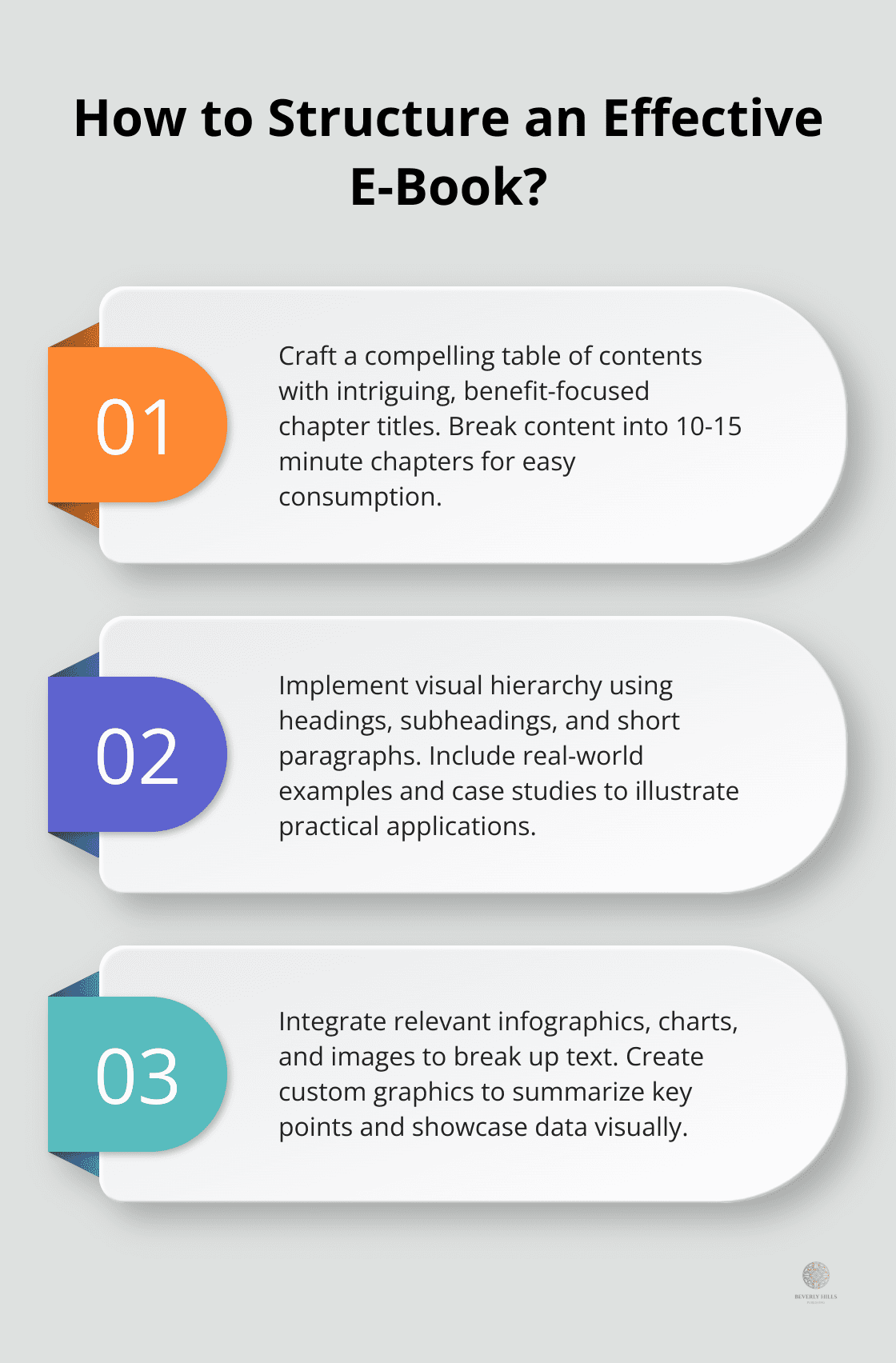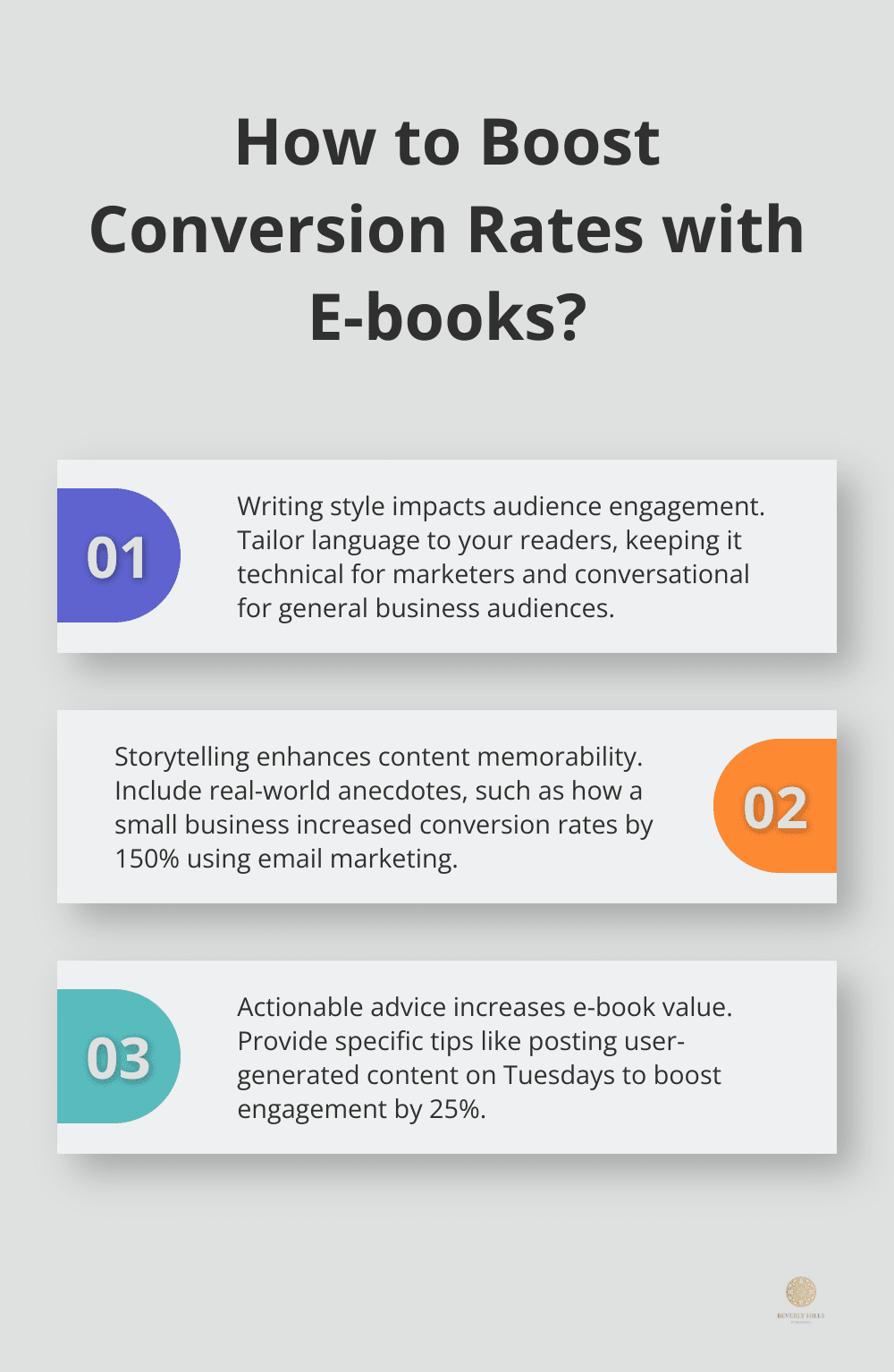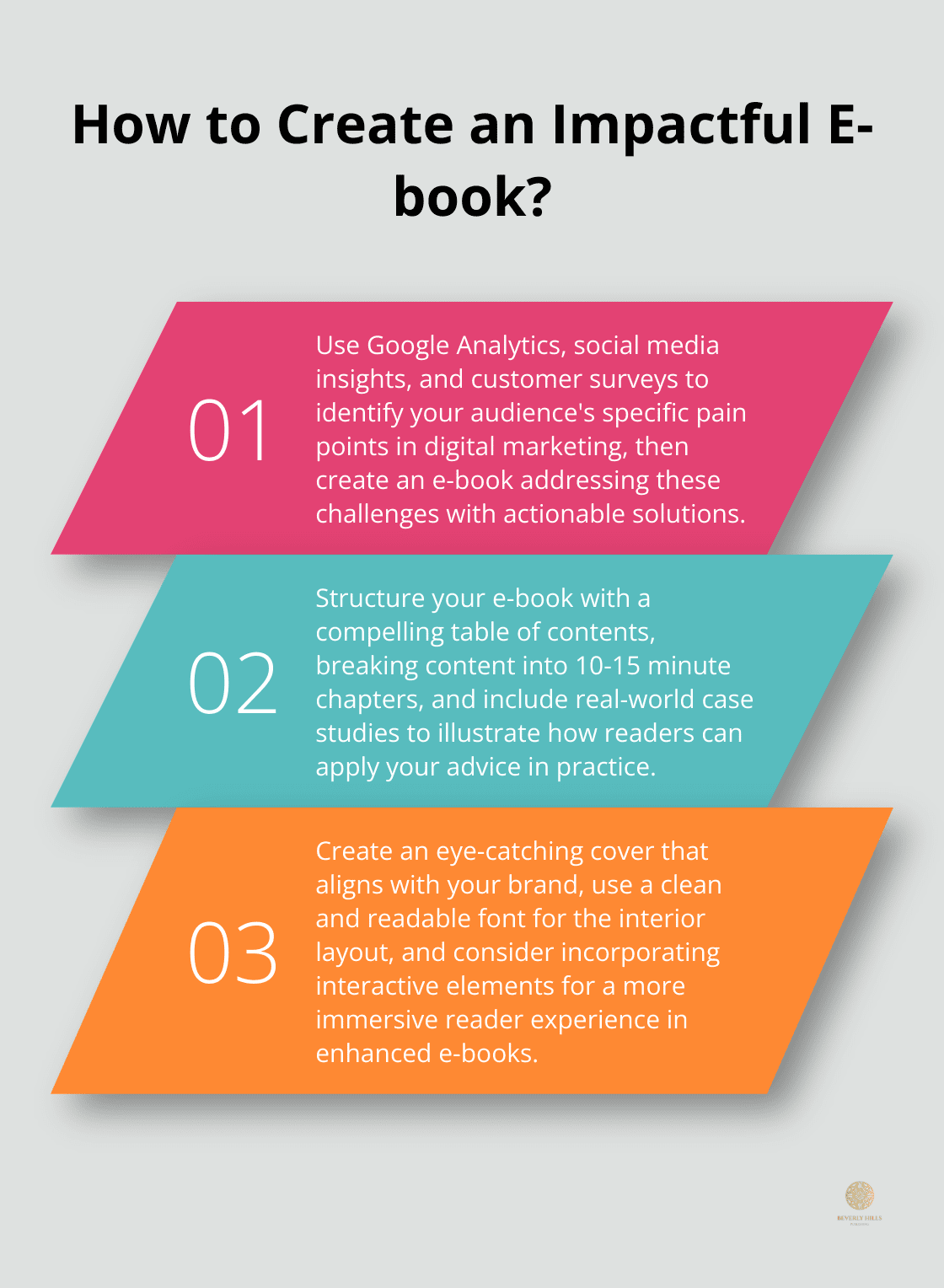At Beverly Hills Publishing, we know the power of a well-crafted digital marketing e-book. It’s a versatile tool that can boost your brand, generate leads, and establish your expertise in the field.
This guide will walk you through the essential steps to create an impactful e-book that resonates with your target audience and drives results.
Picking a Winning E-Book Topic
Know Your Audience Inside Out
The foundation of a successful digital marketing e-book lies in understanding your target audience. You must uncover their challenges, interests, and pain points. Use Google Analytics to analyze the demographics and behaviors of your website visitors. Conduct surveys or interviews with existing customers to identify their most pressing issues. Social media listening tools can provide valuable insights into online conversations your audience engages in.
Stay on Top of Industry Trends
The digital marketing landscape changes rapidly. To create a relevant e-book, you need to position yourself at the forefront of industry developments. Follow thought leaders on social media, subscribe to reputable marketing blogs, and attend industry events. Tools like Google Trends can help you identify emerging topics in your niche. For instance, as of 2025, we observe increased interest in AI-powered content creation and privacy-first marketing strategies.
Scope Out the Competition
Create your e-book with a clear understanding of the competitive landscape. Analyze your competitors’ offerings and identify gaps you can fill. Tools such as SEMrush or Ahrefs (both popular choices for competitive analysis) can reveal which topics drive traffic to your competitors’ sites. Read their e-books and look for areas where you can provide more in-depth information or a fresh perspective. Your goal should be to differentiate and add unique value, not to replicate existing content.
Solve a Specific Problem
The most impactful e-books address a specific pain point with actionable solutions. Instead of writing a general guide on “Digital Marketing Tips,” narrow your focus to a topic like “How to Increase E-commerce Conversions by 50% Using AI-Driven Personalization.” The more specific and solution-oriented your topic, the more valuable it becomes to your readers.
Test Your Topic Ideas
Before committing to a topic, test its potential appeal. Use platforms like Google Ads to run small campaigns with different topic ideas as ad headlines. Monitor which ones generate the most clicks and engagement. You can also create social media polls or ask for feedback from your email subscribers. This approach helps you validate your topic choice and ensures it resonates with your target audience.

With a well-chosen topic in hand, you’re ready to move on to the next critical step: structuring your e-book for maximum impact. The way you organize and present your content can make the difference between an e-book that engages readers and one that falls flat.
How to Structure Your E-Book for Maximum Impact
Craft an Attention-Grabbing Title
Your e-book’s title serves as the first hook for potential readers. Use power words, numbers, and clear benefits to make it irresistible. For example, “7 Proven Strategies to Double Your Digital Marketing ROI in 90 Days” outperforms a generic “Digital Marketing Tips.” Test multiple titles with your target audience before you finalize your choice.
Write a Compelling Introduction
Your introduction should address the reader’s pain points and promise solutions immediately. Start with a surprising statistic or thought-provoking question (e.g., “Did you know that 68% of businesses struggle to measure their digital marketing ROI?”). Outline clearly what readers will learn and how it will benefit them. Try to keep your introduction concise – 250 words or less should suffice.
Organize Content into Logical Chapters
Structure your content into 5-7 main chapters, each focusing on a specific aspect of your topic. Use a logical progression that builds on previous information. For a social media marketing e-book, you might start with strategy, move to content creation, then to engagement tactics, and finish with analytics and optimization.
Guide Readers with Descriptive Subheadings
Break up your chapters with informative subheadings. These act as signposts, guiding readers through your content and making it easy to skim. A Nielsen Norman Group study found that 79% of users always scan new pages they encounter. Make each subheading descriptive enough that readers can grasp the main points just by skimming them.
Incorporate Visual Elements for Enhanced Engagement
Don’t limit your e-book to text alone. Include charts, infographics, and images to illustrate key points. Use these visual elements to break up text and reinforce important information.

A well-structured e-book keeps readers engaged and ensures they absorb your valuable insights. The next step is to create a visually appealing layout that enhances readability and reflects your brand’s professionalism. Let’s explore how to design an engaging visual experience for your readers.
How to Design a Visually Stunning E-Book
Select a Color Palette That Pops
Your color scheme sets the tone for your entire e-book. Choose 2-3 primary colors that align with your brand and complement each other. Tools like Adobe Color or Coolors can help generate harmonious palettes. A finance e-book might use navy blue for trust, gold for prosperity, and white for clarity. Apply these colors consistently to headings, backgrounds, and graphic elements.
Leverage High-Quality Visuals
Images and graphics are essential for breaking up text and illustrating complex ideas. Use high-resolution stock photos or custom illustrations that directly relate to your content. Avoid generic stock images; opt for authentic, relatable visuals instead. A study found that 40.8% of marketers publish visual content 2 to 5 times a week.
Maintain Brand Consistency
Your e-book should be instantly recognizable as part of your brand. Incorporate your logo, typography, and visual style guide throughout the document. This consistency builds trust and reinforces brand recall. A comprehensive study found that brand consistency can increase revenue by an average of 33%.
Optimize for Mobile Readers
Mobile devices account for over 50% of global web traffic, so your e-book must look great on smaller screens. Use a responsive layout that adjusts to different screen sizes. Keep paragraphs short, use plenty of white space, and ensure that fonts are legible on mobile devices-try a minimum of 16pt for body text.
Create a Professional Cover
Your e-book cover is your first impression. It should catch the eye and look professional, clearly communicating the topic and value proposition. Use bold typography, relevant imagery, and your brand colors. Consider hiring a professional designer for this crucial element-it’s an investment that can significantly boost downloads and engagement. To make your e-book stand out, you might want to explore eye-catching book promotion graphics to complement your cover design.

Final Thoughts
A powerful digital marketing e-book combines audience insight, trend awareness, and professional design. You must select a topic that addresses your readers’ specific needs and structure your content logically. Use compelling titles, informative subheadings, and visual elements to guide readers through your expertise.

The design of your e-book plays a vital role in its success. Create a visually appealing layout with a consistent color scheme, high-quality graphics, and mobile-friendly formatting to enhance readability and reinforce your brand identity. Your e-book’s cover serves as its first impression, so invest time in creating an eye-catching design that communicates value at a glance.
We at Beverly Hills Publishing understand the impact a well-crafted digital marketing e-book can have on your brand and business growth. Our integrated approach to publishing and strategic branding can help elevate your e-book from a simple PDF to a powerful tool. This approach will establish your expertise and expand your influence in the digital marketing landscape.















































































































































































































































